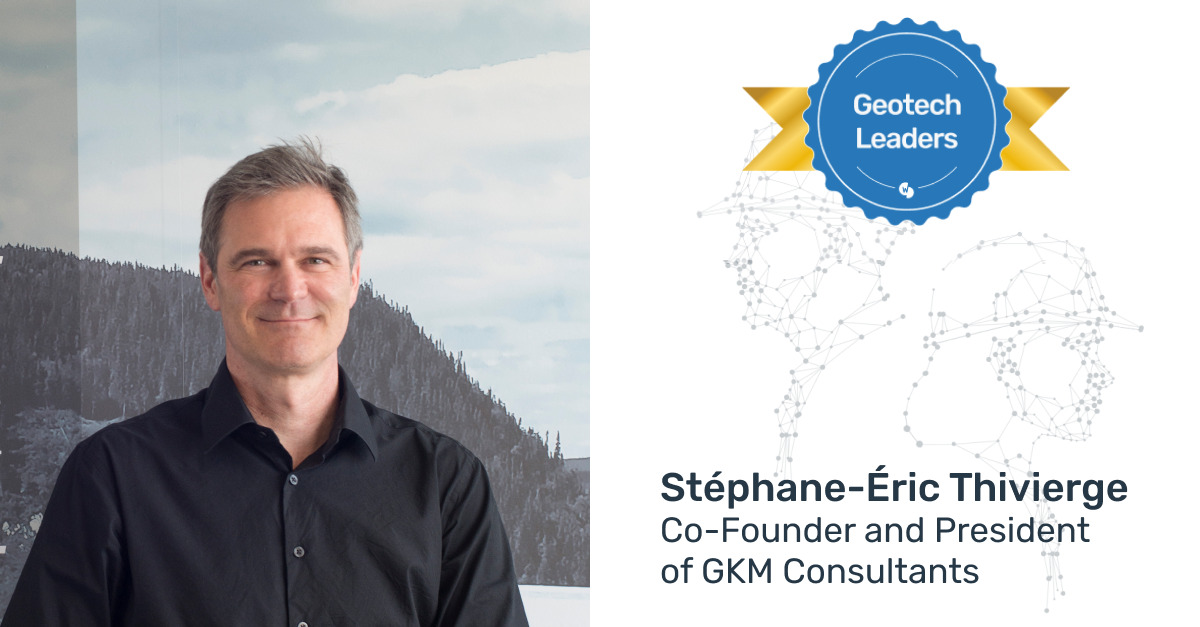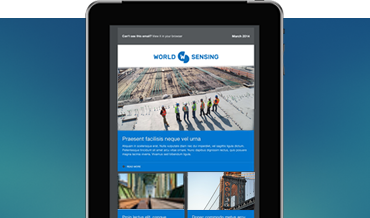Geotech leaders: Stéphane-Éric Thivierge on GKM’s agnostic approach… and more
By Worldsensing
Almost 20 years ago, geological engineer Stéphane-Éric Thivierge, Co-Founder and President of GKM Consultants, dreamt of bridging the gap between device manufacturing engineering applications. Today his company, which was acquired by Keller in 2022, is recognized as a leader in geotechnical monitoring innovation.
Alongside fellow co-founders Martin Dupuis and Jean-Marie Bréhé, Thivierge has been driving change at GKM Consultants since 2007. Before they had time to furnish an office, GKM had landed three lucrative contracts that established the company as a world leader in the design, installation and implementation of geotechnical monitoring systems.
Based in Canada but working across more than 20 countries, notable projects include the Tsankov Kamak hydropower plant in Bulgaria, the Kesem irrigation dam in Ethiopia, the Ottawa Light Rail Transit line and Sir Adam Beck Power Station hydropower tunnel in Canada. Thivierge, now 54, was awarded a degree in geological engineering from Québec’s Laval University in 1993 and began his working life as an Engineer-In-Training (EIT) at GIE in Montreal, QC, then moved to Calgary AB in 1997 to work as a Project Engineer for Tetra Tech. He went on to work for Roctest for seven years before founding GKM.
Throughout his career, Thivierge has worked on projects involving environmental investigations, site rehabilitation, geotechnical assessments, ground stabilization and geological and hydrogeological studies. He is known for his understanding of drilling techniques, shoring methods and piling and earthwork operations. Outside of work, Thivierge has been an acrobatic mogul-skiing competition judge for Ski Acro Québec, a local organization that promotes freestyle skiing, for more than 12 years.
Questions
What is your background and how did you become a renowned figure in geotechnical engineering?
What was the first project that put GKM on the map?
How have you seen the company evolve since these initial projects?
What are you looking at now in terms of potential technological advances?
How do you feel when you look back at GKM’s achievements so far?
What is your background and how did you become a renowned figure in geotechnical engineering?
I was always passionate about environmental and geotechnical work. During my early career, in Montreal, I worked for engineering firms in different applications, using different in-situ and non-destructive testing techniques, and in geotechnical investigations for tunnels and subways. In 1997, I moved to Calgary and got involved in my first geotechnical instrumentation work, using vibrating wire piezometers and inclinometers. I was reading them manually during the excavation and the construction of a hotel in Banff, Alberta.
I saw an opening in sales with geotechnical instrumentation manufacturer Roctest, so I moved from the technical side to business development. Eventually, I saw a gap between the manufacturing space and applications, and a need for integration, installation, commissioning and monitoring services.
At that time, from 2000 to 2007, the word ‘cloud’ was on everyone’s lips, and I saw the opportunity for bridging remote monitoring with various applications. That was when Martin Dupuis, Jean-Marie Bréhé and I started GKM Consultants, a specialized geotechnical instrumentation monitoring service company.
We partnered with manufacturing leaders around the world and assisted organizations, engineering firms, contractors and owners in servicing their geotechnical instrumentation and monitoring needs. The Internet of Things was not in the dictionary at that time. We were a small group, using technology to push data into the cloud so owners, engineering firms and contractors could monitor the behavior of their work in real-time and assess and mitigate risk.
What does GKM stand for?
It is funny, but we found ourselves at the Quebec Business Registration office wondering what to call our company. Because Geokon Incorporated, in Montreal, was a primary partner in our company, we had the GKM, and we chose Consultants because we provide added value to the instruments by servicing them.
Even though Geokon was a primary partner, we have always been independent and have an agnostic approach. We have always listened to the needs of the client and proposed what is best. We were not obliged to use Geokon, and that aided our success. Because we have a multidisciplinary group of physicists, mechanics, geological and electrical engineers and technicians, we’re able to entertain different applications and technology within the group, which makes us well-positioned to guide our clients.
We are now a sister company to Geo Instruments in the US, the UK, Germany and Poland. We are essentially the Canadian branch of Keller, a world leader in geotechnical solutions.
What was the first project that put GKM on the map?
We were fortunate to win three projects when we started. One was tunneling, one mining and the other was a hydropower dam. The Sir Adam Beck Power Station hydropower tunnel built for Strabag was 16 meters in diameter and 10 kilometers long, taking water from the top of the Niagara Falls and bringing that energy downstream to a new powerhouse.
At that time, the bid was to have three arrays inside the tunnel—but a $50,000 contract became $2 million over two years. It was great. Another we are still involved with is the Raglan Mine, north of Québec, in the Nunavik area, where there is permafrost. People were manually reading thermistor strings, piezometers and inclinometers, and this was challenging during winter because nobody wanted to take manual measurements in harsh conditions.
We deployed remote monitoring systems to allow automatic measurements, and today we are still servicing and assisting this company. The third is the Tsankov Kamak Dam, in Bulgaria. The tender came from Geokon. It is a double-curvature concrete dam and we won the $2.5 million contract in January 2008. We had only started the company in September 2007.
There were just the three of us, but we partnered with local businesses, training them to install and commission the instrumentation as they were concreting the dam. This project put us on the global map.
How have you seen the company evolve since these initial projects?
We have a segmentation market strategy. Our penetration approach is very different from mining than infrastructure or the energy sectors. Our alliances with manufacturing leaders give us the opportunity to represent them and bid on these projects.
What are you looking at now in terms of potential technological advances?
Worldsensing and LoRa have definitely brought additional opportunities for our company. We have a great alliance with Worldsensing. Most of the projects have clusters of instruments and what I see moving forward is the capability of reading several types of sensors within a node. That would be great, and that’s where I see Worldsensing technology can bring a lot of advantages compared to other platforms. It is about improving the integration capabilities of the product suite.
How do you feel when you look back at GKM’s achievements so far?
I am really proud of the wealth GKM has created, including the employment of many engineers. We now have 50 employees and professionals in the company. Additionally, I am proud of the knowledge and know-how that we have exported to more than 20 countries around the world.

